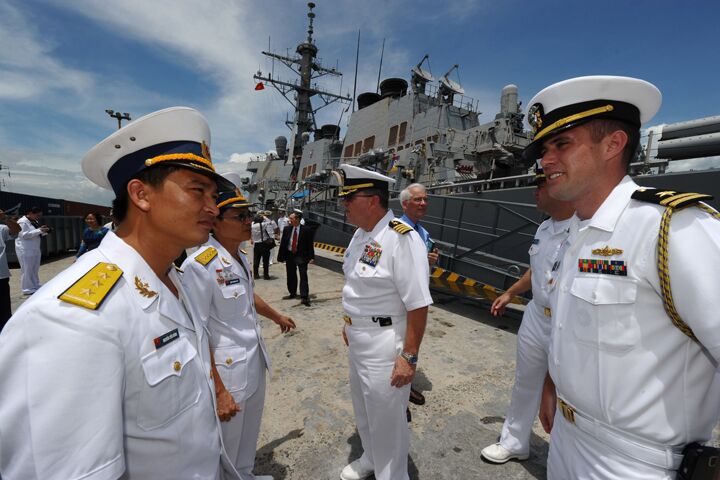
China’s Rise Stirs Southeast Asian Countries to Build Up Militaries
China’s ascendancy and Beijing’s claims to the entire South China Sea have prompted the countries of Southeast Asia to shore up their defense forces to record levels, and to bolster their security ties with the United States.
A modernized Chinese Navy has compounded its presence throughout the 1.3 million-square-mile sea, and for the past three years has threatened international oil firms operating there. In recent months, an increasingly aggressive China has dispatched several warships to the region, issued unilateral bans on fishing in disputed waters, seized 22 or more Vietnamese fishing boats, conducted unprecedentedly large-scale military exercises in disputed waters, and carried out seismic exploration activities in disputed island territories. Beijing has also broadcast an unceasing torrent of state-controlled media commentary reiterating its claim to all of the South China Sea.
China’s increasing belligerency has not gone unnoticed by its neighbors.
A 2009 survey of “strategic elites” in Southeast Asia found that an overwhelming majority said the U.S. would be the greatest source of stability and peace in the region in 10 years’ time. A strong majority also said that the greatest threat to the region was not rogue North Korea, but China.
From 2005 to 2009, national weapons acquisitions throughout the region doubled as compared to the preceding five-year block, according to data released earlier this year by the Stockholm International Peace Research Institute. The bulk of the build-up was in Vietnam, Malaysia and Indonesia.
“There is a threat perception among some of the countries in Southeast Asia,” said Siemon Wezeman of the Stockholm International Peace Research Institute. “China is an issue there.”
Concerns about China’s increasingly aggressive behavior in the region were starkly evident in July’s regional security forum held in Hanoi. When U.S. Secretary of State Hillary Clinton announced to Chinese Foreign Minister Yang Jiechi that Washington would insert itself into the tumultuous sovereignty disputes in the South China Sea, 11 Asian powers rallied in support of the U.S.’s involvement. Then, the U.S. announced last week that it is nearing an accord with Vietnam to share nuclear technology and fuel. The proposed agreement would even grant Vietnam allowance to enrich its own uranium. Hanoi’s singular aim in these moves and its increased weapons acquisition appears to deter China.
The apprehension of smaller Southeast Asian countries regarding China’s rise shows their awareness of Beijing’s ultimate intentions: regional hegemony. A few decades ago, these powers would have identified China as a cultural cousin with aims and ideologies akin to their own, but now Vietnam and its Southeast Asian neighbors recognize China as a menacing superpower commanding a huge swath of the Earth’s resources and people. And they tremble in its shadow.
A time will soon come when these nations realize that they stand to lose more by resisting China than by allying with it, but for now they cling to the illusion of American power that remains in the Pacific.
If China’s kindred nations and cultural cousins are concerned about its rise, how clear should the threat be to the West?
Vietnam and its neighbors are coming to understand a sobering reality which the Trumpet has warned about for more than 20 years based on the prophetic insight of Herbert W. Armstrong, editor in chief of the Trumpet’s forerunner magazine, the Plain Truth. Under Mr. Armstrong’s inspired leadership, the December 1959 Plain Truth wrote:
Red China insists it has a legal right not only to Tibet but to many parts of India and Southeast Asia. … Their constant dream for centuries has been ultimate world conquest!
Such a forecast, when China was still insular and backward, was bold and unpopular. But the accuracy of Mr. Armstrong’s predictions is now painfully obvious, and more so every week. In the face of his detractors, Mr. Armstrong’s credibility is solidifying by the day. To understand more about Mr. Armstrong’s five decades of accurate geopolitical forecasting, read He Was Right.
